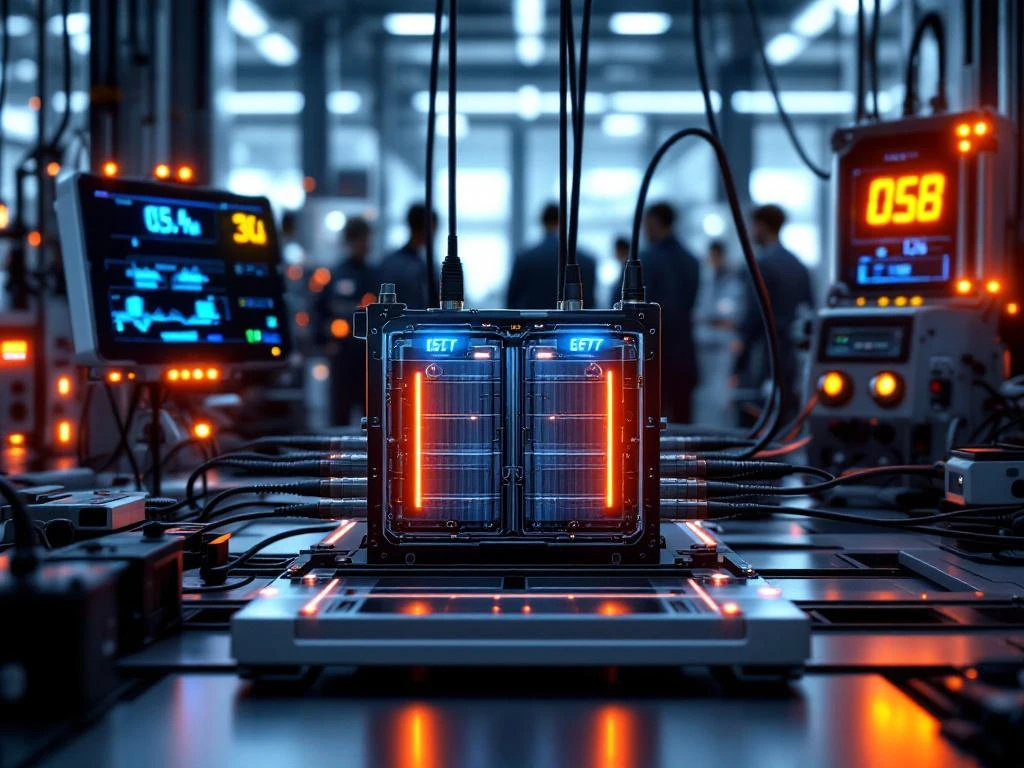You should consider custom voltage requirements for battery systems when standard voltages (12V, 24V, 48V) cannot meet your specific power demands, space constraints, or integration needs. This typically applies to specialised applications like construction machinery, Formula racing, marine systems, and industrial equipment where performance, efficiency, and precise fit are critical for optimal operation.
Understanding custom voltage requirements in battery systems
Custom voltage requirements represent tailored electrical specifications designed to meet unique application demands that standard battery systems cannot fulfil. Unlike conventional off-the-shelf solutions, these systems are engineered with specific voltage ranges to optimise performance, efficiency, and integration within specialised equipment.
Modern battery applications increasingly demand precision in power delivery. Standard voltage solutions often fall short when dealing with space-constrained environments, extreme operating conditions, or equipment requiring specific power characteristics. This gap drives the need for customised specifications that align perfectly with operational requirements.
The importance of custom voltage solutions becomes evident in high-performance sectors where every aspect of the power system must be optimised. From battery electric vehicle conversions to industrial machinery, the right voltage specification can dramatically impact system efficiency, component longevity, and overall performance.
What are custom voltage requirements in battery systems?
Custom voltage requirements are precisely engineered electrical specifications that deviate from standard industry voltages to meet specific application needs. These requirements encompass both nominal voltage (the rated voltage) and operating voltage ranges (the actual working parameters under load conditions).
Standard battery systems typically operate at common voltages like 12V, 24V, or 48V. However, custom specifications might require voltages such as 36V, 72V, 144V, or even higher depending on the application’s power demands and electrical architecture.
The customisation extends beyond simple voltage numbers. It includes considerations for voltage stability under varying loads, peak voltage requirements during high-demand periods, and minimum voltage thresholds for consistent operation. These specifications ensure the battery system integrates seamlessly with existing electrical components whilst delivering optimal performance.
When do standard battery voltages fall short of your needs?
Standard battery voltages become inadequate when your application faces space limitations, power density requirements, or integration challenges that cannot be resolved with conventional solutions. These limitations often manifest in specialised industrial applications or high-performance environments.
Space constraints frequently drive custom voltage needs. When available mounting space is limited, higher voltage systems can deliver the same power with smaller, lighter battery packs. This is particularly relevant in aviation applications or compact machinery where every cubic centimetre matters.
Power density requirements also necessitate custom voltages. Applications demanding high power output relative to system weight or size benefit from optimised voltage specifications. Racing applications, for instance, require maximum power delivery whilst maintaining strict weight limitations.
Integration challenges arise when existing electrical systems operate at non-standard voltages. Rather than implementing complex voltage conversion systems, custom battery voltages can match existing infrastructure, improving efficiency and reducing component complexity.
Which applications typically require custom voltage specifications?
Construction machinery, Formula racing, marine applications, aviation, and rail systems commonly require custom voltage specifications due to their unique operational demands and performance requirements.
Construction machinery often operates in harsh environments with specific power requirements for hydraulic systems, electric drives, and auxiliary equipment. Custom voltages ensure optimal power delivery whilst maintaining durability under extreme conditions.
Formula racing and high-performance automotive applications demand precise voltage specifications to maximise power-to-weight ratios. Battery electric vehicle conversions in this sector particularly benefit from custom solutions that integrate perfectly with existing electrical systems.
Marine applications face unique challenges including saltwater exposure, space constraints, and varying power demands. Custom voltage systems provide reliable power whilst withstanding harsh maritime conditions.
Aviation applications require lightweight, high-performance systems with strict safety standards. Custom voltages enable optimal power delivery whilst meeting stringent weight and reliability requirements.
How do you determine the right voltage for your application?
Determining optimal voltage requirements involves calculating power demands, assessing current limitations, and evaluating thermal considerations alongside safety requirements and system efficiency goals.
Begin by analysing your power requirements across all operating conditions. Consider peak power demands, continuous power needs, and any specific power profiles your application requires. This analysis forms the foundation for voltage specification.
Current limitations play a crucial role in voltage selection. Higher voltages typically allow for lower currents to achieve the same power output, reducing conductor size, weight, and thermal losses. Use a [calculator](https://powerbattery.eu/technologies/power-battery-calculator/) to determine optimal voltage-current relationships for your specific requirements.
Thermal considerations significantly impact voltage selection. Lower currents associated with higher voltages generate less heat, improving system efficiency and component longevity. This is particularly important in applications with limited cooling capacity or extreme ambient temperatures.
Safety requirements and regulatory compliance must also influence voltage selection. Certain voltage ranges may require additional safety measures or certifications, impacting overall system design and cost considerations.
What are the key benefits of choosing custom voltage solutions?
Custom voltage solutions deliver improved efficiency, better integration, reduced weight and size, enhanced performance in extreme conditions, and long-term cost optimisation for specialised applications.
Improved efficiency results from eliminating voltage conversion losses and optimising the entire power delivery chain. When battery voltage matches load requirements, energy losses are minimised, extending operating time and reducing charging frequency.
Better integration simplifies system design by eliminating complex voltage conversion circuits. This reduces component count, improves reliability, and simplifies maintenance procedures.
Weight and size reductions are achieved through optimised voltage selection that minimises conductor requirements and eliminates unnecessary conversion equipment. This is particularly valuable in mobile applications where weight directly impacts performance.
Enhanced performance in extreme conditions comes from tailored voltage specifications that account for temperature variations, load fluctuations, and environmental factors specific to your application.
How do custom voltage requirements impact battery system design?
Custom voltage requirements significantly influence cell configuration, thermal management, safety systems, charging infrastructure, and integration approaches with existing electrical systems.
Cell configuration must be precisely calculated to achieve the desired voltage whilst maintaining capacity and safety margins. This involves determining the optimal series and parallel arrangements of individual cells to meet both voltage and current requirements.
Thermal management systems require careful design to handle the specific heat generation patterns of custom voltage configurations. Different voltage levels may require unique cooling approaches to maintain optimal operating temperatures.
Safety systems must be tailored to the specific voltage range, including appropriate fusing, monitoring, and protection circuits. Higher voltages may require additional safety measures and specialised components.
Charging infrastructure needs modification to accommodate custom voltages. This includes selecting appropriate charging equipment and implementing compatible charging protocols.
Key considerations for implementing custom voltage battery systems
Critical factors for implementing custom voltage systems include cost implications, lead times, regulatory compliance, maintenance requirements, and selecting an experienced battery partner for custom voltage projects.
Cost implications extend beyond initial purchase price to include development costs, tooling requirements, and ongoing support expenses. When evaluating the total cost of ownership, it’s essential to consider how custom pack pricing compares to standard solutions over the system’s operational lifetime.
Lead times for custom voltage systems are generally longer than standard solutions due to design, prototyping, and testing requirements. Planning should account for development phases and potential iterations.
Regulatory compliance becomes more complex with custom voltages, potentially requiring additional certifications or safety approvals. Early consultation with regulatory experts can prevent delays and ensure compliance.
Maintenance requirements may differ from standard systems, necessitating specialised knowledge or equipment. Consider long-term support availability when selecting custom voltage solutions.
Selecting the right battery partner is crucial for successful custom voltage implementation. Look for partners with extensive experience in custom solutions, proven track records in your industry, and comprehensive support capabilities. If you’re considering custom voltage requirements for your application, we encourage you to [contact](https://powerbattery.nl/contact/) our team to discuss your specific needs and explore tailored solutions.


